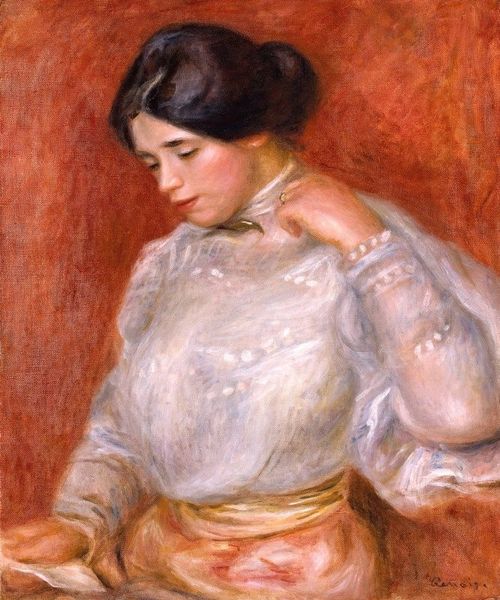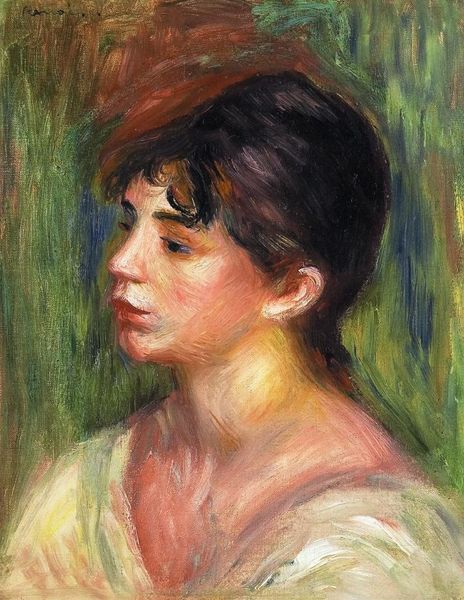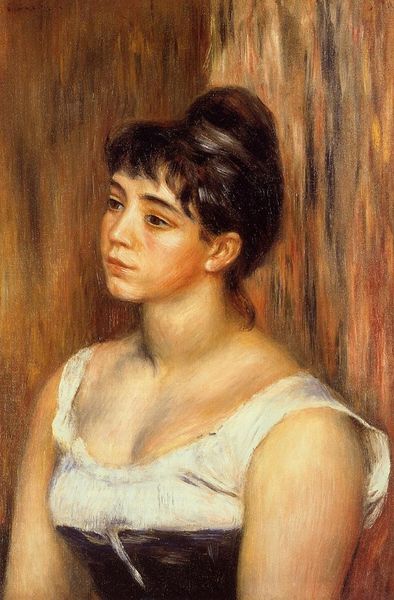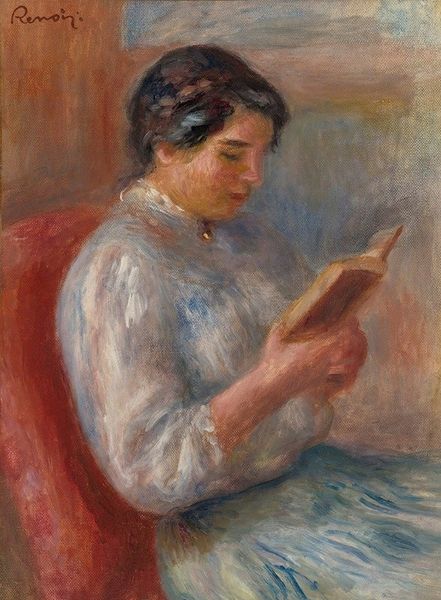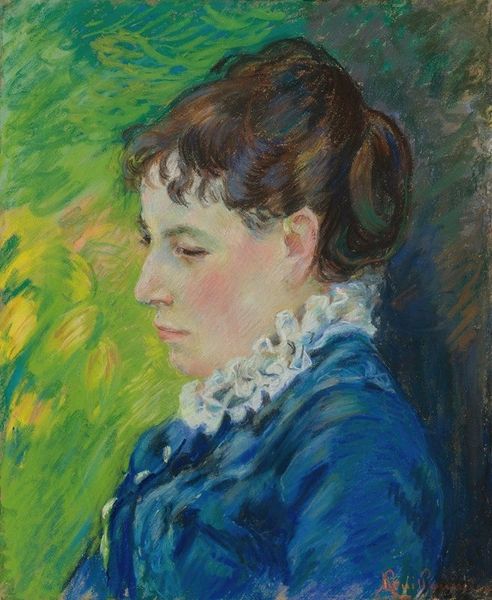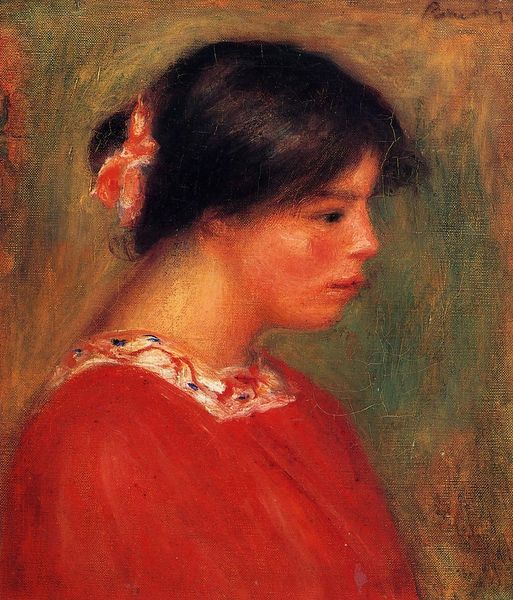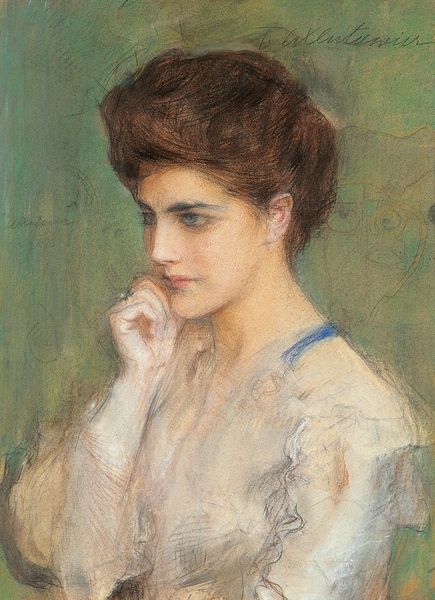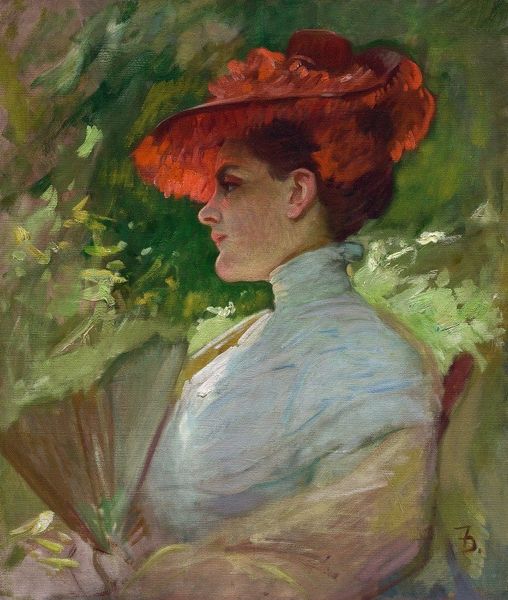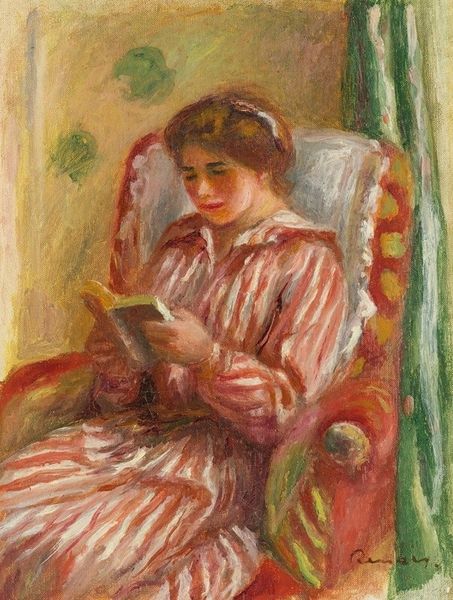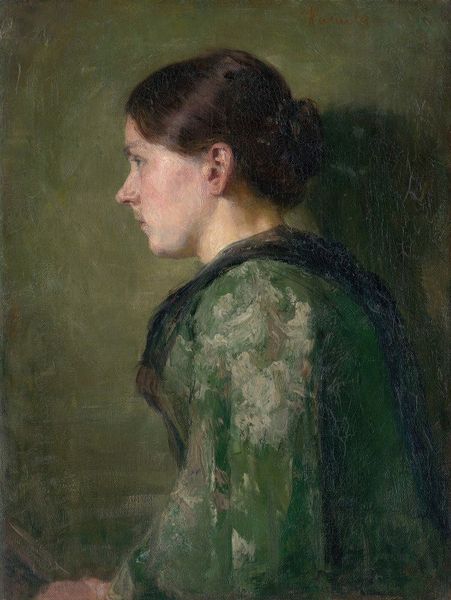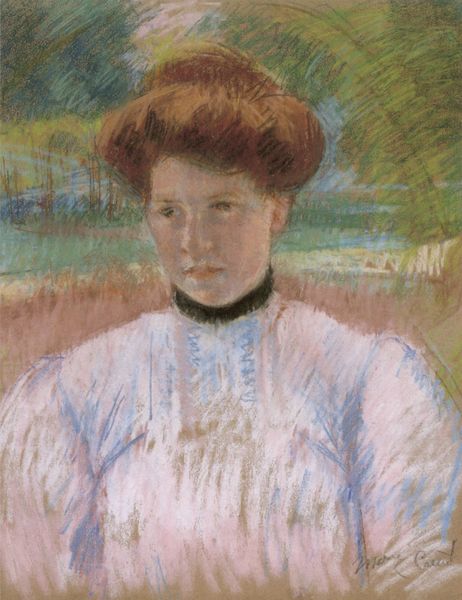
Copyright: Public Domain: Artvee
Curator: Looking at Renoir’s "Gabrielle en Rouge" from 1903, I am immediately struck by the subject's demure downward glance, set against that almost vibrating backdrop of olive green and gold. Editor: The dress is what grabs my attention. That bold swath of red—what fabric is that supposed to be, I wonder? The weave looks quite coarse but reflects the light so gorgeously! You know what I see, it feels so warm, literally it might keep one warm. Curator: Indeed. Let's delve into the formal aspects, shall we? Note how Renoir uses broken brushstrokes and tonal gradations to depict the figure, seamlessly blending her form with the background. It exemplifies late Impressionist principles. Editor: Right, but broken brushstrokes also speak to speed, and possibly to a lack of finish? It doesn’t read to me like it would have been made by anyone sitting hours painstakingly crafting it. Who was this Gabrielle and was her time valued, or undervalued? We know that Renoir painted mostly his housekeepers and that Gabrielle Renard, the sitter, did start as one, then she became his muse… Curator: True, there is an ambiguity there. But it also accentuates the immediacy of the scene. Note the balance; the vermillion dress provides such chromatic intensity which draws one's eye to the facial features. Semiotically, the downcast gaze conveys contemplation and introspection, doesn't it? Editor: Possibly, but it can also simply signal a kind of working-class modesty that was forced upon servants in this context. Red for a servant seems lavish, though, it can't have been usual attire for this role at this time? The very title focuses our attention on an element that clashes a bit with conventional portrayals of women in such roles, or perhaps I’m overstating that... Curator: Perhaps. But I interpret it differently; as an embodiment of Renoir’s ongoing exploration of light and form, the painting transcends the mere depiction of a woman and embodies an essay in colour, line, and mood. Editor: I suppose we can agree that the seemingly simple work conceals complex questions of class, artistic process, and material culture. Curator: Quite right! Editor: A stimulating debate; I see so many new elements that I didn't notice before.
Comments
No comments
Be the first to comment and join the conversation on the ultimate creative platform.

